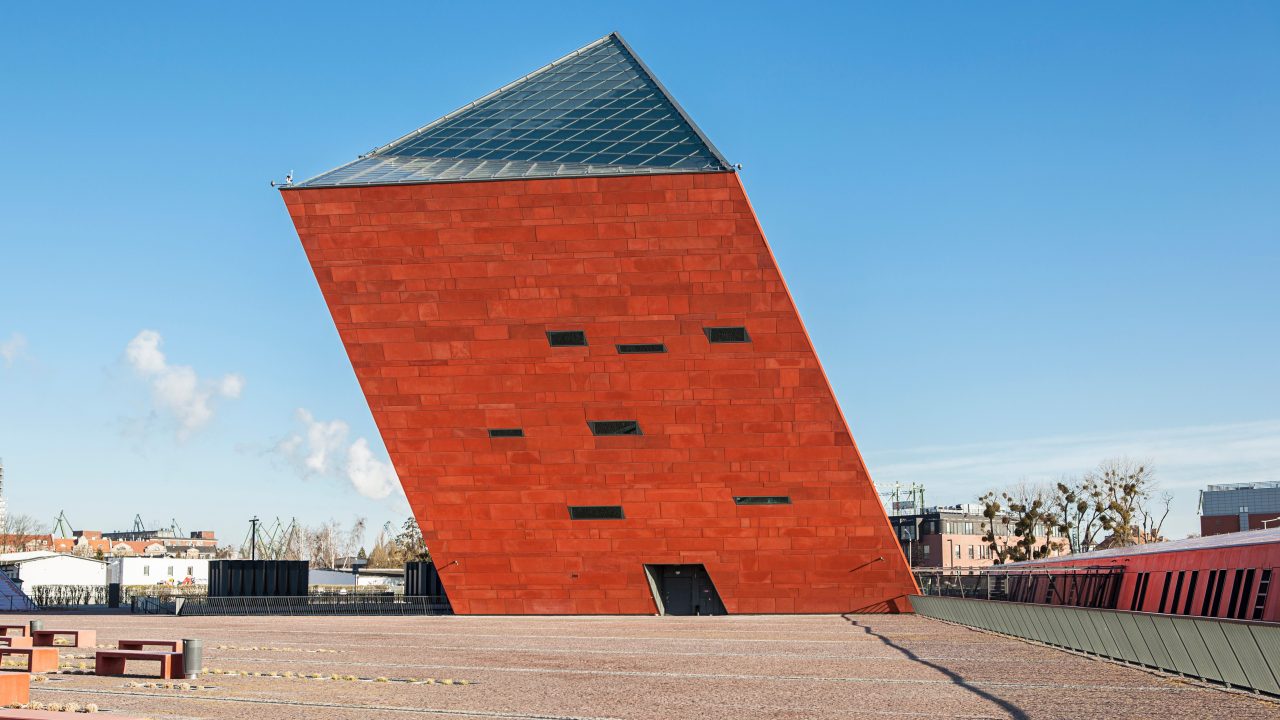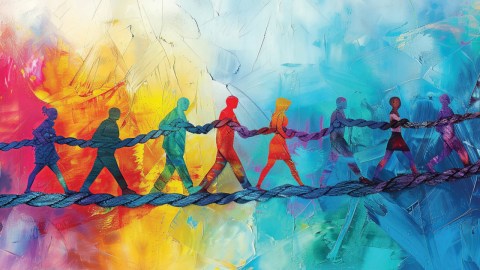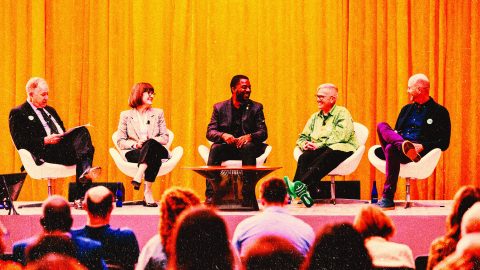
When the pandemic arrived and made its far-reaching impact on our people and institutions, many wondered if we would ever recover. Few could recall such an existential crisis during their careers, where the work of museums was so drastically altered with little sense of what the future held. But in fact, there were precedents to draw on for assurance that the field would endure, such as the 1918 influenza epidemic, World War II, or even the culture wars of the 1980s and 90s.
To better understand this history of endurance, I reached out to UMass Amherst history professor Samuel Redman, who in 2022 published a book on the subject called The Museum: A Short History of Crisis and Resilience.
The following are excerpts from our conversation about how the museum field has met, responded to, and moved forward following periods of disaster and crisis:
Adam Rozan (AR): You’ve written several books, including Bone Rooms, Prophets and Ghosts, and The Museum: A Short History of Crisis and Resilience, which came out last year. While each book is different, they all discuss aspects of museum history. What’s your interest in museums, and how would you describe the kind of museum-based storytelling you do?
Samuel Redman (SR): I’ve always been fascinated by museums, and I became seriously interested in the history of museums as an undergraduate. At around the same time, I worked in a variety of roles at the Science Museum of Minnesota, the Field Museum of Natural History, and History Colorado. During my journey as a museum professional, I learned a good deal about museum methods, all while becoming even more compelled by the story of how these places came to be. Eventually, I left my work in the museum world to pursue additional training as a historian.
In graduate school at Berkeley, I had access to an extraordinary museum archive as well as a stand-alone anthropology library. This allowed me to continue to dive deeper into museum history and the history of anthropology. I’ve become fascinated by working to understand how museums and other cultural institutions speak to important themes in American life. This includes stories about colonialism, science, popular education, and civic life. During my time in graduate school, I was also fortunate to work in museum archives in Los Angeles, San Francisco, Philadelphia, and Washington, DC. By exploring these archives and drawing stories with objects, newspapers, fiction, oral histories, and a host of other sources, the story of how people in the United States have thought about museums becomes much richer and more complex than people often understand it to be.
AR: In your latest book, The Museum: A Short History of Crisis and Resilience, what historical moments do you explore?
SR: The book opens with a terrible 1865 fire at the Smithsonian Institution. I note that the fire, while devastating in part, also provided an impetus to modernize the museum in all sorts of important ways. From there, the opening chapter of the book, and the story that inspired the entire investigation, is the history of museums during the 1918 influenza epidemic (more commonly known as the “Spanish Flu”). The second chapter explores the Great Depression’s ramifications on the Hearst Museum of Anthropology at the University of California, Berkeley (then the University Museum). The next chapter traces the story of the Smithsonian as it responded to the Second World War. From there, the book takes a look at the 1970 Artists Strike, an event where artists in New York City banded together to stage protests at museums across the city, especially The Metropolitan Museum of Art. The Culture Wars of the 1980s and 1990s, with many flashpoints surrounding museums, felt deserving of a chapter of its own. And finally, a chapter on recent museum controversies and disasters, from the COVID-19 pandemic and ongoing racial reckoning, brings the story closer to the present day.
AR: This may be an obvious question, but let’s ask it anyway, what are the lessons for the modern museum in exploring the 1970 Artist Strike, for example?
SR: In May 1970, a group of protesters (led by a vocal group of artists) came together in New York City to voice their frustration with a host of important issues. The artists and their supporters hoped to protest how art was exhibited in New York, as well as the ongoing war in Southeast Asia, the unthinking displays of sacred Native American artwork, and sexism in museum settings. At the time, many museum leaders largely shrugged off the protests. Many activists only felt further alienated by the outcome.
The press covered the event in New York City. Much of the debate foreshadowed the discourse surrounding museums in the decades to follow. The Met’s response to the protest was deemed to be especially tone-deaf and poorly considered. The museum’s reputation was damaged as a result, and a series of public relations fiascos followed. The episode represents a valuable object lesson in leadership based in humility and an ability to listen to a broad array of constituents, from school groups to artists and major donors. The concerns put forward by vocal activists can highlight the direction the broader community might be going in the future. It certainly spotlights the concerns of at least one group of constituents.
The Second World War is another remarkable example. Until recently, few writings connected the war and museums in the United States. It turns out that the Smithsonian made critical choices in working with war agencies throughout the conflict’s duration. Not long after the US entered the war, the Smithsonian began voluntarily coordinating surveys to better understand what resources they might offer to the war effort. The museum also coordinated the publication of an oft-forgotten booklet series called the War Background Studies. Museums elsewhere around the country were largely isolated from the conflict, but the Smithsonian became intensely involved. Given that we have recently witnessed debates about the place of heritage preservation through archaeology, anthropology, and US government agencies in countries like Afghanistan, Iraq, and Syria, a closer look at this history seems warranted. The Smithsonian maintains connections to the State Department to the present day.
AR: In your research, were you able to learn how those museums were able to respond to the crises and what they were thinking?
SR: One lesson that became clear to me in studying these moments is that crisis events are rarely singular. The era of the 1918 influenza was also marked by racial violence and labor unrest in addition to radical economic uncertainty. The Great Depression was clearly an economic and jobs-related crisis, but museums were struggling with space issues at the same time. The 1970 Art Strike was partly defined by the Vietnam War as well as being about the concerns artists had about museums and the history of their collecting practices. Museums are often forced to confront challenges they can only partly anticipate. Museum leaders sometimes find themselves focused on one challenge, when another unanticipated problem emerges. Thinking about problems broadly and creatively, therefore, becomes a valuable asset.
In recent years, the Getty Museum responded to unprecedented threats presented by growing wildfires by enlisting a team of brush-clearing goats to reduce the threat of fire. The Museum of Chinese in America in New York raised more than four hundred thousand dollars through crowdfunding online in response to a devastating fire. This isn’t to say that a fire or another catastrophe is desirable—of course it is not—but the events surrounding a crisis moment can serve as a clarifying call to action. It may not always be the approach that public relations professionals want to follow, but museums are generally strengthened through transparency and collaboration.
AR: Okay, fast-forward, as a historian, how are you interpreting the responses from today’s museums throughout the pandemic?
SR: Museums are facing both new constraints and opportunities in the COVID-19 pandemic’s long wake. Economically, the first year of the crisis was a disaster for museums, with attendance figures plummeting to the floor. In the maelstrom, there were also valuable opportunities to reach new audiences online. Things have stabilized some since the pandemic’s earlier stages, but challenges related to high inflation and supply change issues remain difficult. Perhaps most important, however, were the long-overdue public conversations about racism, colonialism, and the history of museum collecting. These threads were tied together, in many respects, but they were also part of distinct conversations that have been taking place around museums for some time. Many museums find themselves thinking anew about these challenges and offering both important public statements and plans of action to follow. My sense is that people are still thirsting for these kinds of conversations, as well as a desire to seek out experiences that go beyond the digital platforms where we already spend so much time.
And yet, important questions about museums and society remain unresolved. How should museums respond to present-day challenges, be they public health related, as a result of political polarization, or some other thorny issues? How might museums better prepare for economic uncertainty? Again, most importantly, how can museums work to do better in addressing the legacy of colonialism, scientific racism, and inequality in the contemporary context? So much more work remains to be done. Recent work with artists and other community partners offers compelling clues about how museums can grab hold of a new place in American life. But this will only be possible if museums continue to strive to have more open and transparent conversations about the challenges they face moving forward.
AR: It’s common for museums to participate in some form of civic-based activity, be it blood drives, food and clothing donation sites, voting (polling stations), or even naturalization ceremonies. But this seemed to ramp up during the pandemic, particularly with some museums becoming testing sites and vaccine clinics. How does this fit into our understanding of museums today?
SR: In some ways, this is an important new innovation. In other ways, of course, there are important precedents for museums becoming less isolated and more community-oriented in their operations.
To me, an important turning point in this story takes place around the 1918 influenza epidemic. People often forget that there was a series of deadly epidemics circulating around that time, from influenza to tuberculosis, polio, and infantile paralysis. In response, the American Museum of Natural History organized one of the first public health exhibits truly geared around practical, contemporary concerns. An exhibit on airborne diseases, famously advertised with signs reading “DON’T SPIT,” captured attention and led to long lines stretching outside the museum.
The existing literature on museums often points to cultural institutions as spaces where elites work to control the lower classes, shaping their lives and their views in a way that only benefits themselves. My view is somewhat less cynical in that I see many groups as historically seeking out museums for education and entertainment purposes. Not merely passive recipients of a museum agenda, museum visitors partially shape and define the experiences offered to them. Furthermore, museums have evolved to include a whole range of civic-based activities. And yet, many museums have long clung to a self-image as an isolated, neutral outsider. This is an outmoded and inaccurate view of reality, and museums can continue to engage on a deeper level with their communities. This starts with listening to the needs of the community and taking a more holistic view of the assets that museums might make available to the wider populace.
In the run up to World War I, the entire textile department of the Philadelphia Museum of Art volunteered for government or military service. In 1918, the Oakland Museum of Art was also temporarily shut down in order to become a hospital ward for those sickened by influenza. In the 1940s, museums in San Diego’s Balboa Park were temporarily shut as a result of the war. Museums have made enormous sacrifices in the past to benefit the public good. During the same World War II upheaval, many museum leaders advocated, I think rightly, that the museum should not just engage in wartime-related subjects, but should also create space for a healthy respite from the ever-present challenges of warfare. I’m sure many readers, while remaining vigilant and safe, recall feeling some level of “COVID fatigue,” where many of us (myself included) became tired of simply thinking about COVID all the time. At a certain point, I was ready to mask up and go look at some interesting fossils or stare at a beautiful painting.
AR: Are our modern organizations shaped by past moments of crisis and disaster?
SR: Most definitely, yes. Some of the ways in which past crisis moments have influenced museums are vestigial and hard to fully see. For example, few people had written about, and it is frequently forgotten, how museums turned to addressing current events and ongoing public health issues during the 1918-1920 era, a pivot that we are still witnessing today as museums balance efforts to position themselves as “neutral” spaces while also feeling compelled to address current problems head on.
Another example is the Great Depression era, where museums positioned themselves to benefit from hundreds of thousands of person hours laboring through New Deal programs. During this time, museum exhibits were updated, catalog cards created, and entire crews were even hired to engage in large-scale archaeological expeditions. These programs all had their limitations and flaws, certainly, but when we walk through many museum galleries or explore their collections, we are subtly benefiting from the past work of temporary New Deal workers who were likely just glad to have a job during the Great Depression.
Beyond just economic uncertainty, most of us can recall major fires, floods, and earthquakes and other disasters potentially impacting museums. In recent years, the Mellon Foundation has launched pilot programs for improving emergency preparedness in museum settings. They also sponsored Disaster Relief Recovery Funds for museums as well as COVID-19 Emergency Grants. Recent fires and floods only serve as a reminder that museums must be prepared for similar events in the future, as well as threats faced by earthquakes and global climate change.
The Conservation Center for Art & Historic Artifacts recently announced a partnership with Cencor Puerto Rico to preserve paper, books, and photographs through a collaborative conservation effort. In other words, there is a lot happening in this space. My book argues that museums and these non-profit organizations committed to making museums more resilient would be wise to take a critical and fulsome look at museum history. Ultimately, this will help make museums stronger and more effective in the future.
AR: Any final thoughts?
SR: Museums will again be reinvented in the future, but this will not happen as if by magic. It takes jostling and commitment from both those within museums as well as passionate outsiders pushing the museum to change for the better.









Crises impacting museums could and should be resilient spurs to their meaningful progress in both effectiveness (‘doing the right things’) and efficiency (‘doing things right’) terms. Unfortunately, the ‘talk’ is rarely matched by the ‘walk’ as illustrated by 9/11 and Covid-19.
I am always in awe of how museums survive tough times. Some may fold that they are exceptions. Others may shrink or merge. When I was director of the Morris Museum, Morristown, NJ I had to navigate it through the Great Recession. It was a terrible experience but one that taught me how passive boards of trustees can be and how one had to rely on personal commitment and creativity. In spite of salary reductions (starting with mine) and furlough weeks we only lost one employee and he was quickly rehired once finances became healthy again. I can only imagine how awful running a museum was during the worst of the Covid years. My daughter is in the museum field and her institution survived as did her job. She worked from her parents home and the museum used the time to deal with a project that had been onthe back burner for a few year. It is now well in place!
Thank you for this interview. I was especially interested in how other museums have survived during difficult times. I am researching and writing the history of the Houston Maritime Museum now called the Houston Maritime Center. Opened in 2000 the museum has gone through several challenges including the death of its founder and major donor. The museum trustees were able to keep the museum from permanently closing during the pandemic with the support of industry and the local community. Thank you for your final thoughts on museums being reinvented in the future. Museum leadership must listen to their community, and I believe that is the case with the Houston Maritime Center.